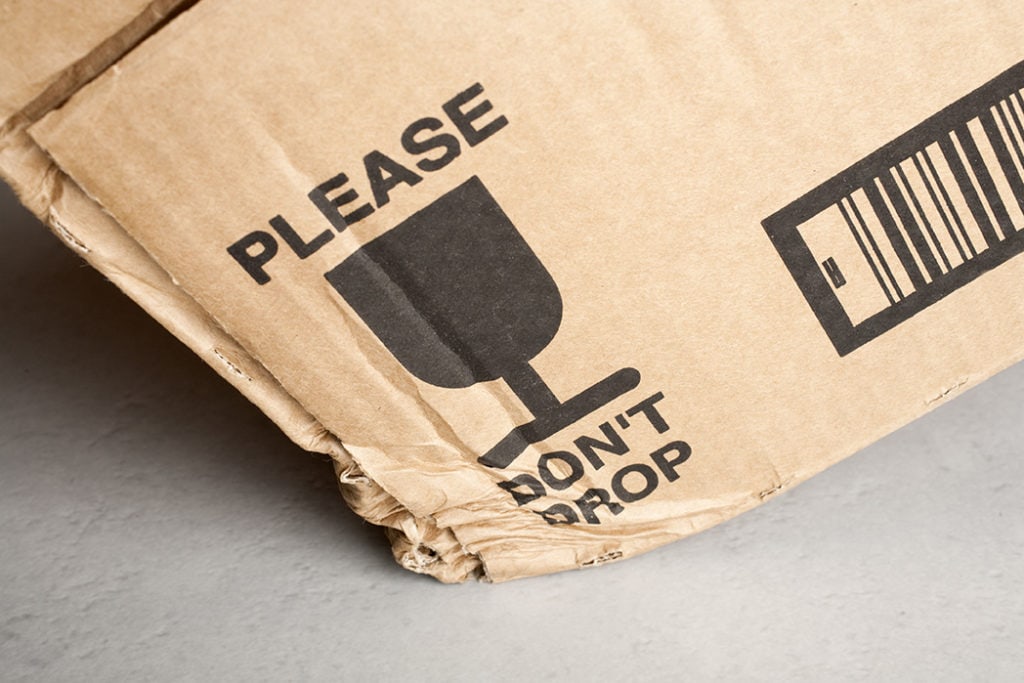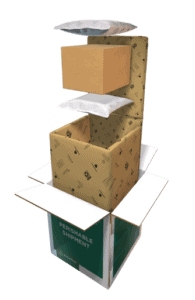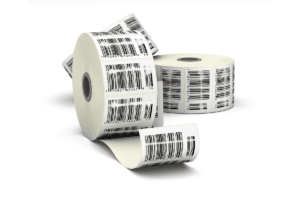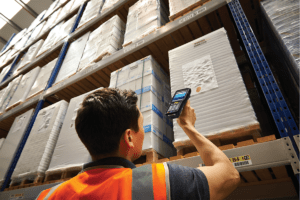Packaging Solutions to Reduce Product Damage
You have to break a few eggs to make an omelet. That’s the way many companies view product damage that occurs in the supply chain.
And sure, occasional breakage or spoilage is to be expected, but we’ve found that product damage can be often be avoided by using the right mix of packaging solutions.
Read on for a few simple ways to dramatically reduce damage rates and protect the quality of your merchandise.
The Hidden Cost of Product Damage
Before we explore solutions, it’s worth highlighting the full impact of item damage on a business.
The obvious cost of poor packaging is the broken item itself, but there are hidden costs that can affect the bottom line and even the company’s reputation.
Returns are becoming a huge issue for companies. Freight costs are skyrocketing and return shipping for damaged items eats into profits.
Add on the cost of a negative customer experience – not only the dissatisfaction of failing to get the quality product you ordered, but the frustration of having to return it – that results in the loss of repeat business and ultimately lower revenue.
Imagine if you could get your damage rate from 15% to down to 7%. You’d save millions in avoidable costs, boost profitability, and significantly improve customer satisfaction.
Check your Box’s Strength Rating
The first line of defense in protecting your product is the container you put it in, such as a corrugated box or carton. But you have to make sure you have the right box for your needs.
Two important factors in choosing the right box for your product are the ECT and Mullen (or Burst Test) ratings.
The ECT or Edge Crust Test measures the cross-section crushing of corrugated cardboard, which is related to the stacking strength of a box. The ECT value describes how much weight it can sustain on the edge. For example, a 32 ECT box can withstand 32 lbs. of pressure when stacked.
The Mullen test (also called a burst test or pop test) refers to a hydraulic device called a Mullen tester which applies pressure to a piece of suspended corrugated. It’s used to measure how much force is required to warp or burst the corrugated sheet, which is an indicator of how well the box will perform if poorly handled during transit.
By considering the weight of your product and the type of box you need, you can reduce the likelihood of the box being crushed when stacked and prevent product damage to your merchandise.
To help you decide what type of box is best suited for your products, consult your local Crown Packaging Representative.

Trust an Expert to Find the Right Protective Packaging
In addition to the box, the cushioning you choose is very important to protect your products when being transported.
There are a wide variety of protective packaging options available designed to absorb vibrations and keep items from shifting, from paper-based dunnage to air pillows, bubble wrap to foam-in-place solutions, custom inserts, and much more.
Each type of void fill has pros and cons depending on your needs. Some provide extra stability while others are faster to utilize in your production or shipping environment. Some options are more eco-friendly while other alternatives are more cost-effective.
So how do you choose?
This is another area where a packaging specialist can be of assistance. Crown Packaging’s team of experts can help you explore different packaging equipment and supply options so you can decide which one is best suited to protect your product without compromising on efficiency, cost, or sustainability.
Item damage can be often be avoided by using the right mix of packaging solutions.
Rich Benkelman | Vice President | Crown Packaging Corp.
Identify Shipping Damage Faster with Indicators
If damage does occur, one way to prevent avoidable repacking and return shipping expenses is to identify products that may have broken while in transit.
There are actually indicators we offer to help identify packages that have been compressed or dropped, resulting in breakage.
One is called a Shockwatch®. You can put a sticker on the outside of a box that has a little white capsule in the middle of it. If that white capsule shows up red, that box was dropped too hard.
Then customers realize there could be an issue before they sign for the item.
Avoid Spoiled Food & Pharmaceuticals with Cold Chain Packaging
In addition to preventing broken items, we can help reduce spoilage with temperature-controlled packaging.
We work with manufacturers of pharmaceuticals and food products to package their goods safely through a variety of cold chain solutions.
This includes everything from traditional EPS (expanded polystyrene – aka Styrofoam) coolers, to insulated box liners, gel packs, indicators to track the package’s temperature, and more.
Learn more about cold chain packaging solutions in this article we posted: Cold Chain Packaging Solutions for Life Sciences.

ClimaCell by Temperpack, an insulated box liner solution, is one example of cold chain packaging. Your Crown Packaging Representative can help you explore a variety of cold chain options.
Packaging Solutions to Reduce Tampering
Pilferage is a big concern, especially for retailers and manufacturers of luxury goods and high-end electronics.
One easy way to deter and identify theft or pilferage is to use security tape.
It’s very simple. It’s a type of tape that has diagonal lines on it, and you can see whether the product has been cut into or not.
Another effective way to reduce product tampering is to change the type of film it’s wrapped with it while being transported.
If you’re using clear film, you may want to switch to an opaque black or blue film to help conceal what type of item is being shipped.
Prevent Product Damage from Sun Exposure with UVI
If your company is storing products outside for any length of time, you might want to integrate UVI, a UV inhibitor, into the stretch film or poly bag.
That’ll protect the product from changing color or being damaged by the sun.
For example, we worked with a company that manufactures white plastic molded fences.
Once the fencing was produced it was stored outside for three months on average.
With sun exposure that white fencing would turn yellow. Stretch film or poly with UVI was the answer.
It was a minor change in their packaging process that had a huge impact on the quality of their products.

Nexus UVI® stretch film from Paragon Films is just one example of a poly-based packaging solution that features a UV inhibitor. Contact Crown to learn about UVI packaging solutions.
Packaging Ideas that Work for You
In most of these cases, companies may be unaware of the solutions available to them, just like the fence company that didn’t know there was UVI that could be put in stretch film or poly.
That’s one of the values we bring – to help you find the right packaging for your needs.
If your company experiences a damage rate or return rate of 5% or more, there are likely packaging options available to help you decrease these rates and improve quality.
Contact your local Crown Packaging Representative to learn more.
Reduce Damage Rates By Improving Your Packaging
We’re here to help you find the right packaging services and supplies to meet your needs. Contact Crown to get started.




